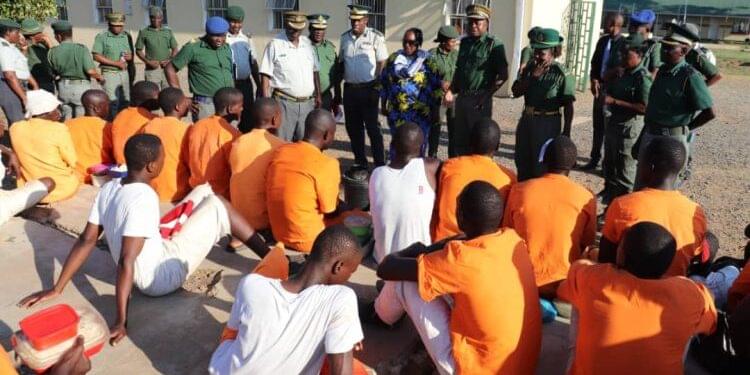The prison population in Zimbabwe increased to over 21 000 during the third quarter of 2023 with r@pe constituting one of the main reasons for the imprisonment of male prisoners aged 60 and above, an official has said. Zimbabwe Statistical Agency (ZimStat) acting director general Matiwonesa Phiri said this while presenting a report on the third quarter prison admissions and discharges statistics on Wednesday.
Phiri said at 21 619, the inmates in all the country’s prison facilities was higher than the second quarter population of 20 635, with the number of male prisoners going up from 20 035 to 20 997 and that of female prisoners increasing by 22 to 622 in the third quarter.
She said the prison statistics assist in informing policy development and planning in the criminal justice system, reporting on the United Nations Crime Trends Survey (UNCTS) and monitoring of Sustainable Development Goal 16.3.2.
The offences are aggregated according to the UN International classification of Crime for Statistics Purposes (ICCS) with the Zimbabwe Prisons and Correctional Services (ZPCS) providing the information used in the document.
While theft, assault, burglary and robbery without firearms led to the imprisonment of new prisoners aged 15 to 60 during the third quarter, 20 percent of crimes that led to the imprisonment of male prisoners aged 60 and above were r@pe cases.
The majority of the new prisoners (54.8 percent) reported that they were unemployed before admission into prison and most were committed for theft (23.4 percent), ass@ult (16.2 percent), burglary (10.1 percent) and robbery without firearm (6.1 percent).
Domestic v!olence accounted for 5.4 percent imprisonments while the crimes that led to the incarceration of female prisoners were mostly theft (25.3 percent) ass@ult (15 percent), drug related offences (7.1) and other unclassified criminal acts (7.1 percent).
The latest figures placed the national imprisonment rate at 142 per 100 00 population with the rate of incarceration among males being 288 per 100 000 population and females 8 per 100 000 population.
Of the 21 619 prisoners in the country’s prisons, 16 216 (75 percent) were sentenced and 5 403 (25 percent) were not sentenced. The number of the sentenced prisoners increased from 15 329 while that of unsentenced prisoners went up from 5 306.Phiri said there were 12 641 new prisoners that were admitted during the quarter, of whom 11 818 were males, an increase from 11 072 during the second quarter while that of female prisoners decreased to 823 from 858.
A total of 11 413 prisoners, 10 649 males and 764 females were discharged of whom 6 253 (54 percent) were sentenced while 5 160 (45.2 percent) were unsentenced of whom 5 878 (94 percent) were male and 375 (6 percent) female.
The sentenced prisoners that were released comprised those on community service, community service with time to pay, paid fine, time to pay restitution or fine and with expired sentences while the unsentenced released prisoners were made up of those that had paid bail or released on their own cognizance (free bail), acquitted by the courts, had further remand refused, released to immigration and remanded out of custody.
“The highest proportions of both new male and female prisoners were aged between 20 – 24 followed by those aged 25 – 29,” said Phiri.
“It can be observed that after the age group 20 – 24, the number of new prisoners decreases with increasing age.”
Most new prisoners usually lived in Harare (15.8 percent) followed by Mashonaland West (12.3 percent) and Midlands (11.8 percent) as was the case with most male prisoners.
The majority of new female prisoners were from Harare (16.4 percent) followed by Manicaland (12.3 percent) and Mashonaland East (11.1 percent).
Prisoners from other SADC countries constituted 3 percent, those from other African countries 0,6 percent and from outside Africa 0.5 percent.
Source New Ziana










